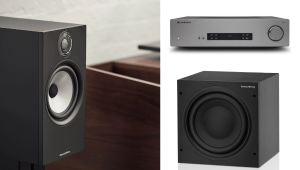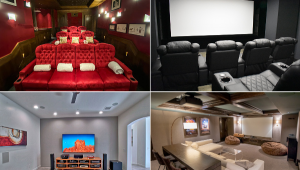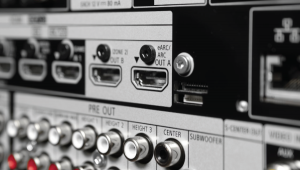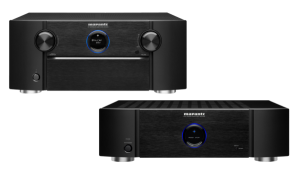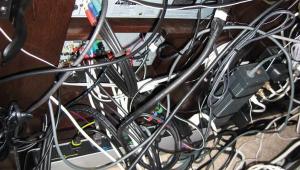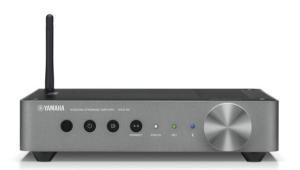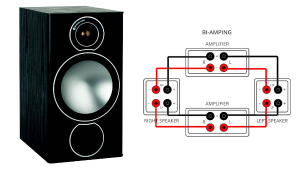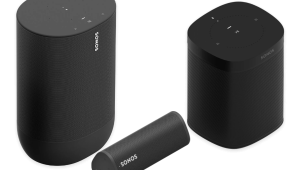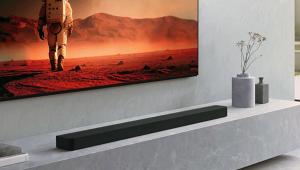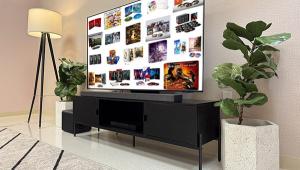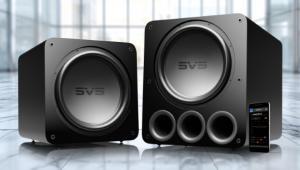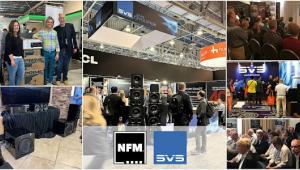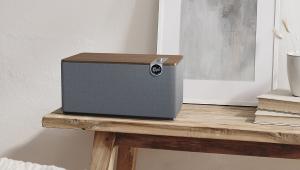3D TVs, AVRs, Screen Size

I'm looking for a 3D TV in the 55- to 65-inch range. I was leaning toward the Panasonic TC-P65VT25 until a salesperson at Best Buy told me the Samsung PN63C8000 is better, plus it includes a Blu-ray player. I thought Panasonic made the best plasmas. Also, which is better for 3DLCD, LED, or plasma? Is Sony, Samsung, or Panasonic the best brand?
Rich McGready
In our reviews of 3D TVs so far, we haven't seen a big difference in 3D performance between the major brands. Tom Norton and I both think plasmas produce slightly less ghosting than LCDs and LEDs (which are LCDs with LED illumination), and it has seemed to me that Sonys produce slightly more ghosting than other brands, but this is not a big problem with any technology we've seen yet.
The big 3D issue for me is screen size. To get the most out of 3D, you need as large a screen as you can get. That would tip the scale toward the Panasonic in my view, though the difference between 63 and 65 inches is not significant. Another important issue that is often overlooked is the comfort of the 3D glassesthe Panasonic glasses are the least comfortable I've tried, and the LG glasses are the most comfortable, followed closely by the Sony glasses.
We haven't reviewed the C8000, but the C7000 had a slightly higher black level than the VT25, which is another factor in favor of the Panasonic. On the other hand, the Panasonic provides no setup or calibration controls for 3D, nor does it have 2D-to-3D conversion, both of which the Samsung includes.
Also, keep in mind that we have seen various problems with all 3D Blu-ray players and certain 3D titlesfreezing, pixelation, color splotches, etc. This doesn't happen very often, and it's often not repeatable, but it sure is annoying. Also, some players can play certain titles fine, while other players choke on the same disc. We suspect these issues are a symptom of 3D growing pains, and they should be resolved fairly soon, but for now, it's something to be aware of.
Two for One
I have an Yamaha RX-V1 A/V receiver, which I got about five years ago for $500. It has now died, and I am looking to replace it. I went into a Best Buy to look at some receivers, and the salesperson told me they don't carry anything in the same class as the RX-V1 and that I might want to try separates. He mentioned two brands that he said where great for entry unitsOutlaw and Emotiva. Have you heard of these two manufacturers. Which one would you rate better, or is there a receiver I should be looking at that will perform like my old Yamaha?
Also, I am looking to replace my TV with a 50-inch plasma. I sit 10 to 12 feet from the screen. Will I see a difference between 720p and 1080p? The guy from Best Buy said that 720p would be fine since I sit that far awaythey would be about the same in terms of detail, so he recommended getting a 720p model and use the money I would save to have the TV calibrated. Is this a true statement? I always thought you needed 1080p to get the best picture.
Brian Woods
The RX-V1 was Yamaha's flagship receiver in its day, costing $3200. There are a lot of receivers in this price class, many of which are excellent. I'd look at the high-end Pioneer Elite, Integra, and Denon models, many of which are less than that. Yamaha just came out with its new Aventage line, which top out at about $2000; we haven't had a chance to review any of these models yet, but I'm sure we will.
If you want something under $1000 (since you paid only $500 for the Yamaha), I recommend the Onkyo TX-SR608, which lists for $600. See HT's review here; in fact, check out all the recent receiver reviews on HomeTheatermag.com (look for models that have gotten a "Top Pick" designation) and buyer's guide. In the reviews, pay attention to the Video Test Bench section, and avoid receivers that clip above-white and below-black.
I know Outlaw very well; it makes excellent products at very reasonable prices, though it hasn't introduced a new preamp/processor in several years. Emotiva has the same reputation, but I have no direct experience with their products. Audiophiles prefer a separate preamp/processor and power amplifier because each has its own power supply, and there's no chance of electrical interference in the function of each one. Also, you can upgrade one without having to replace both as with an AVR. But many modern AVRs do a great job, so I wouldn't dismiss them out of hand.
As for a TV, I always advocate getting 1080p if possible, even if you sit far from the screen. You might not be able to see the difference in detail between 720p and 1080p, but you could well see visible artifacts on a 720p set as it scales a 1080i (most broadcast) or 1080p (most Blu-ray) signal down to 720p.
Size MattersSort Of
I was about to pull the trigger on the Samsung UN55C8000 until I heard that the UN65C8000 would be coming out soon. Will the picture quality look worse on the 65-incher compared to the 55? The resolution is 1920x1080 on both. Does this mean that the dpi (dots per inch) is lower (worse) on the 65 than the 55? If so, should I get the 55 for quality? I have pre-buyers remorse on the 65 mostly because it is $6000 and I can get two 55s for the same price.
Todd Palermo
You are correct that both sizes have the same resolution, so the "dpi" is lower on the larger screen, and as a result, smaller screens tend to look sharper at a given seating distance. However, this isn't a problem if you adjust the seating distance accordingly. Depending on which recommendation you follow, the best seating distance from a 55-inch screen is between 6.1 and 8.7 feet, while the best distance from a 65-inch screen is between 7.3 and 10.2 feet. So if you sit 10.2 feet from a 65-inch screen, the detail will look the same as if you were sitting 8.7 feet from a 55-inch screen.
Most people sit too far from their TV for a good, immersive experience, so if your seating distance is 10 feet (the minimum typical distance in many homes), I'd go for the 65-incher.
If you have a home-theater question, please send it to scott.wilkinson@sorc.com.


